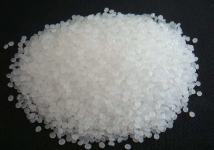read: 740 time:2025-04-08 07:51:06 from:化易天下
When dilute acetic acid is poured on baking soda, a fascinating chemical reaction occurs, which is not only interesting from a scientific perspective but also has practical applications. This reaction is commonly observed in everyday life, particularly in baking and cleaning processes. In this article, we will delve into the details of this reaction, exploring its chemical basis, the products formed, and its implications.
When dilute acetic acid is poured on baking soda, the primary chemical reaction that takes place can be represented by the following equation:
[ \text{CH}3\text{COOH (aq)} + \text{NaHCO}3 \text{(s)} \rightarrow \text{CH}3\text{COONa (aq)} + \text{H}2\text{O (l)} + \text{CO}_2 \text{(g)} ]
Here, acetic acid ((\text{CH}3\text{COOH})) reacts with sodium bicarbonate ((\text{NaHCO}3)), which is commonly known as baking soda. This reaction produces sodium acetate ((\text{CH}3\text{COONa})), water ((\text{H}2\text{O})), and carbon dioxide gas ((\text{CO}_2)).
Acetic Acid: Acetic acid is a weak acid found in vinegar. When dilute acetic acid is poured on baking soda, the acid provides hydrogen ions ((\text{H}^+)) which play a crucial role in the reaction.
Baking Soda: Sodium bicarbonate is a weak base that reacts with acids to neutralize them. When it comes into contact with acetic acid, it undergoes a chemical change, leading to the release of carbon dioxide gas.
One of the most noticeable aspects when dilute acetic acid is poured on baking soda is the rapid formation of bubbles. This bubbling is due to the release of carbon dioxide gas. The gas forms because the bicarbonate ion ((\text{HCO}_3^-)) from baking soda reacts with the hydrogen ion ((\text{H}^+)) from the acetic acid. The production of carbon dioxide is what causes the fizzing and bubbling, a characteristic feature of this reaction.
The reaction between dilute acetic acid and baking soda has several practical applications:
Baking: In baking, this reaction is used as a leavening agent. When baking soda is mixed with an acidic ingredient (like vinegar or lemon juice), the carbon dioxide produced causes the dough to rise, giving baked goods a light, fluffy texture.
Cleaning: The reaction is also harnessed in cleaning, particularly for removing stains or deodorizing. The fizzing action helps to dislodge dirt and grime, making it easier to clean surfaces.
When performing this reaction, especially in larger quantities, it's important to consider safety. The reaction, though not dangerous in small amounts, can release a significant volume of gas and cause overflow if not managed properly. Moreover, the mixture should be handled with care to avoid irritation from the acetic acid.
When dilute acetic acid is poured on baking soda, it triggers a fascinating chemical reaction that is both educational and practical. The combination of a weak acid with a weak base results in the production of carbon dioxide gas, water, and sodium acetate. This reaction has important applications in both baking and cleaning, demonstrating the usefulness of basic chemistry in everyday life. Understanding this reaction not only highlights the principles of acid-base chemistry but also opens the door to exploring its many practical benefits.

Jincheng Petrochemical's 300000 ton polypropylene plant successfully trial production, 2024 polypropylene market analysis

The ABS market remains sluggish, what is the future direction?

Market differentiation of bisphenol A intensifies: prices rise in East China, while prices generally decline in other regions

The production method and process flow of silicone acrylic lotion, and what are the common raw materials